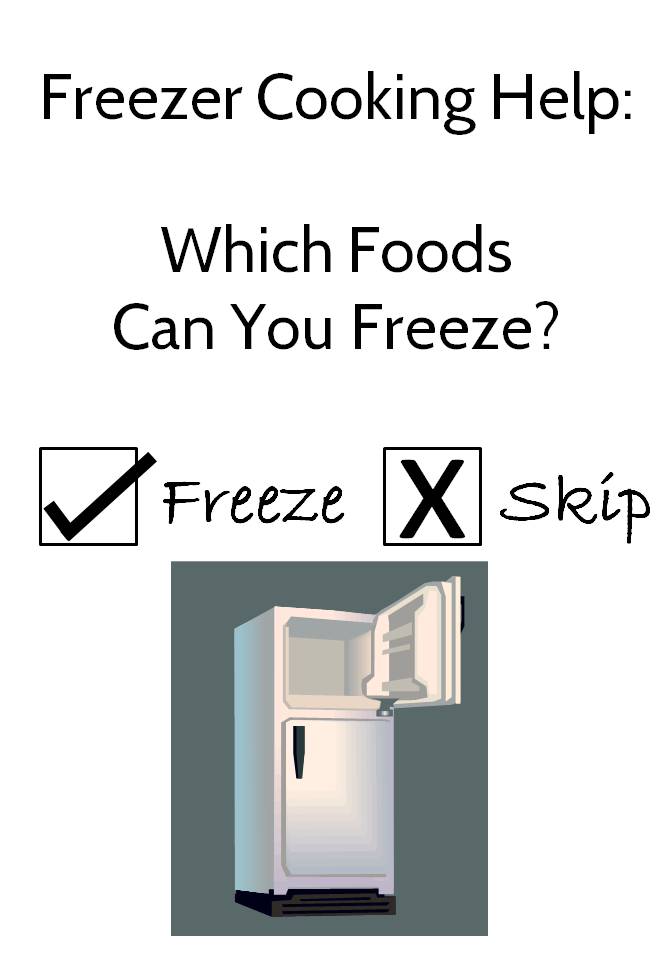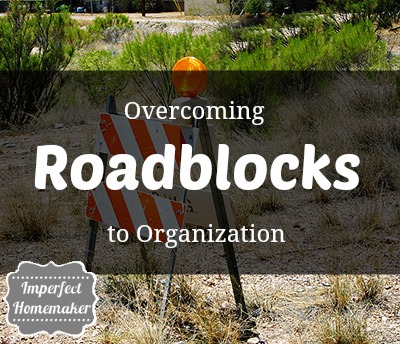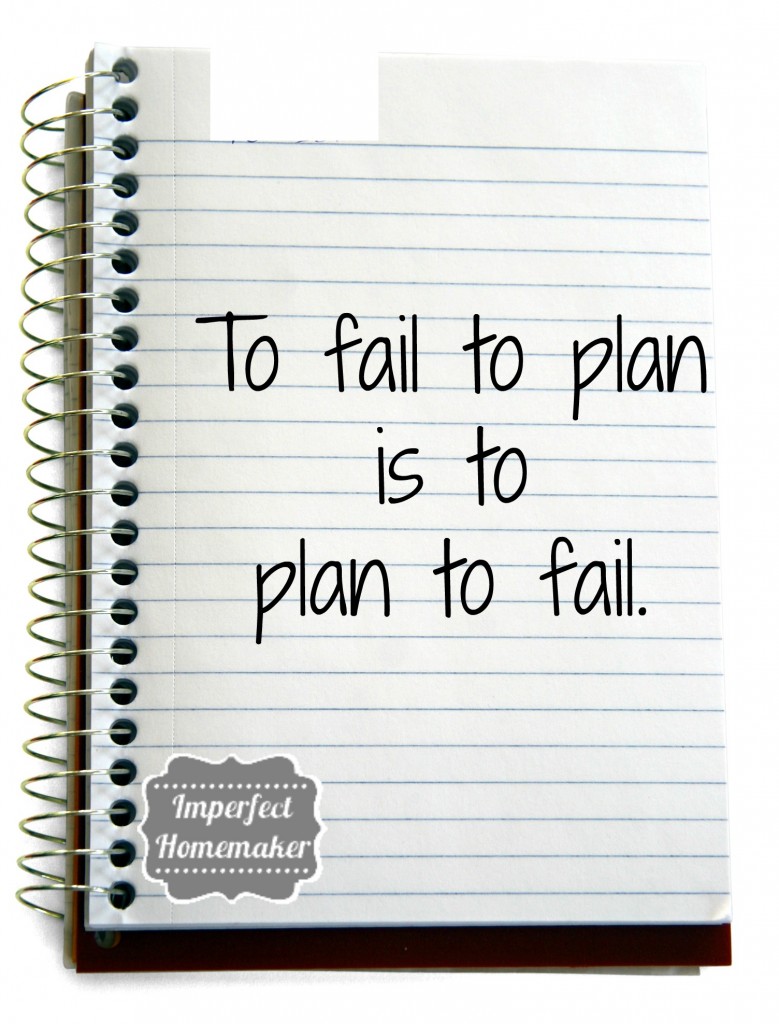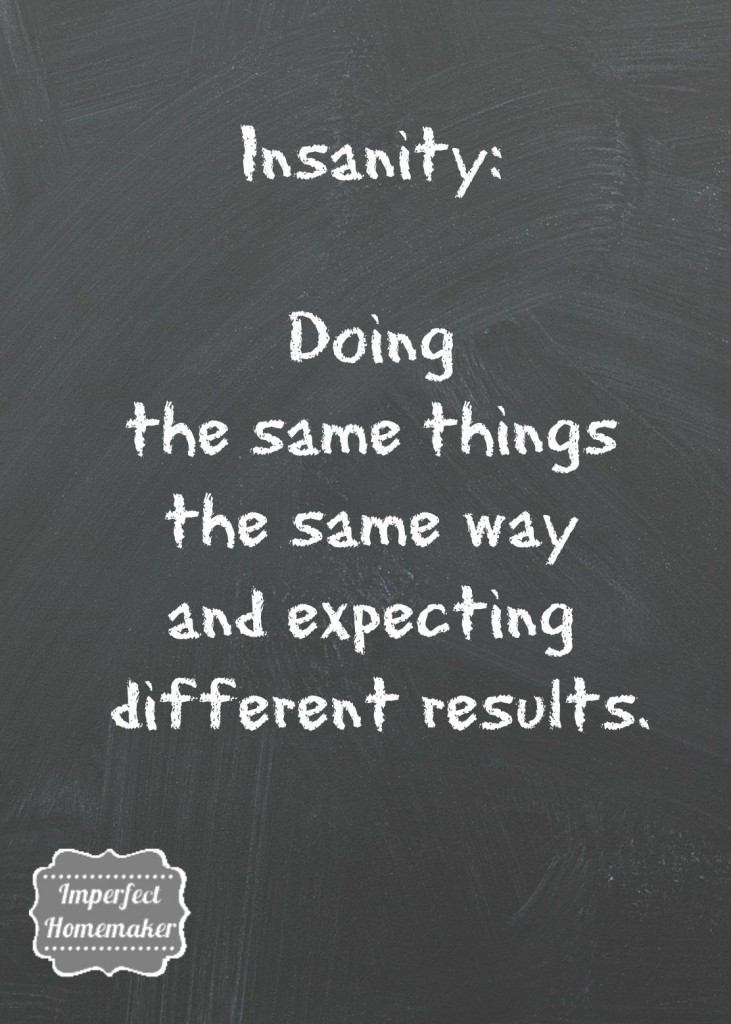Last Friday I posted 4 Reasons You Should Be Freezer Cooking.
Today I want to talk a little bit about what you can and cannot freeze. If you know these things, you can easily turn many of your favorite recipes into freezer recipes. No need to try to find a bunch of recipes that are specifically labeled “Freezer Recipes”.

Do Not Freeze These Items: (or freeze with caution)
Apples
Basil
Celery
Cheese
Chives
Cottage Cheese
Cream Cheese
Crumb Toppings
Cucumbers
Custard
Dairy (milk, sour cream, cream cheese, yogurt)
Fried Food
Frosting
Grapefruit
Grapes
Lemons
Lettuce and leafy greens
Limes
Mayonnaise
Onions
Oranges
Parsley
Pasta
Peppers
Potatoes
Radishes
Rice
Salad Dressing
Salad Greens
Sauces
Sour Cream
Sprouts
Watermelon
Some of the above items can be frozen if you know what you're doing and understand what changes freezing will make to them.
Cheese — You can actually freeze cheese as long as you understand the texture will change. It will be crumbly, (shred it first) and you can't eat it as is, but you can use it in a casserole as a topping. So, if you put cheese on top of a casserole that you're going to pop into the oven to reheat anyway it's fine. But if you plan to slice it for a sandwich, you probably don’t want to freeze your cheese.
Dairy — Freezing dairy will change its consistency; however, you can add it to soups and casseroles without any noticeable difference – especially if you reheat them slowly.
Fried Food — You can freeze fried food as long as you wrap it right, and then reheat it correctly. For something like fried chicken be sure to cool it down while draining off the extra fat, then wrap with freezer paper and then put it inside an air tight container. To reheat, put in the oven frozen after unwrapping on a greased pan.
Grapes — You can freeze grapes if you plan to eat them frozen. If you try to thaw them they will turn to mush.
Leafy Greens — You can chop and freeze leafy greens if you plan to use them in soups or stews.
Onions & Peppers — You can chop these and freeze them to use in recipes. Chop and let them dry on a paper towel first to drain off extra moisture. Spread them on a cookie sheet and freeze for about an hour before putting them into airtight freezer bags.
Tomatoes — You can chop them and freeze into serving sizes or recipe sizes in airtight containers. You can only use them for sauces after freezing or in a soup or stew where texture isn't as important.
Oranges & Citrus — You cannot freeze the fruit but you can freeze the zest. Zest onto a paper towel, and let dry out a bit, then freeze in one layer on a pan for about an hour. Pour into a airtight container to use in recipes.
Rice &Potatoes — They freeze fine in casseroles and dishes, but it does change their texture a bit. You cannot freeze them raw; you must precook and then freeze.
Pasta – While many places have pasta on the ‘no freeze’ list, you can freeze cooked or frozen pasta. It is recommended that you freeze pasta for some dishes uncooked because it will cook during the reheating and you don't want to overcook it. But, you need to use prepared dried pasta and not freshly made pasta that isn't dried.
Below is a list of foods that generally freeze without any problems:
Baked Goods (freeze already baked or freeze the dough)
Baking supplies (nuts, chocolate, coconut, flour, etc.)
Broth
Fruits (any besides citrus)
Fresh Herbs (freeze in ice cube trays with a small amount of water)
Meat
Sauces
Soups
Vegetables
Now that you know what does and doesn't freeze well, you can easily determine which of your favorite meals you can prepare for the freezer. Next time you make your favorite recipe, double it and put the extra in the freezer for a busy night! You won't even be tempted to pick up a pizza knowing that you've got healthy food already prepared!
What is the first meal you'll prepare for the freezer?







